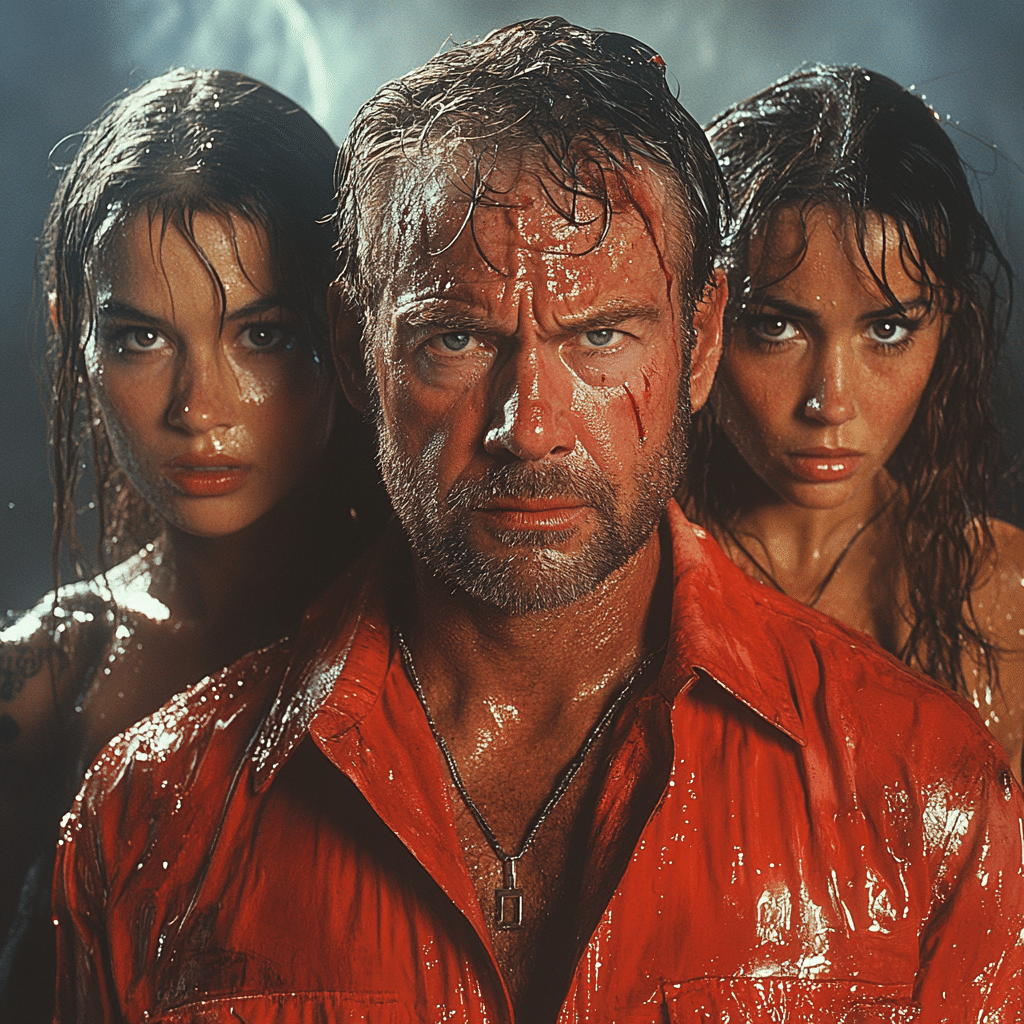The Bobby Bonilla contract has become a symbol of incredible foresight in the world of sports finance. Every July 1st since 2011, sports fans and financial analysts alike have celebrated Bobby Bonilla Day, marveling at the annual payout of $1,193,248.20, which will last until 2035. This astonishing decision by the New York Mets can serve as a masterclass in financial strategy, offering lessons that even top investors pay close attention to. As we dissect the details and ripple effects of this contract, we also glean insights into how deferred compensation schemes can shape a player’s legacy — and a team’s finances — for decades.
The Origin Story of the Bobby Bonilla Contract
In 1999, the New York Mets faced a pivotal financial decision: How to handle the $5.9 million owed to aging slugger Bobby Bonilla. As the team and Bonilla’s agents tabled their options, a groundbreaking deal emerged. Rather than a lump sum payment, they agreed upon an arrangement that seemed, at the time, almost benign — deferred payments with interest, set to begin more than a decade later.
Bonilla’s Strides:
– Performance Pedestal: At the negotiation’s core lay Bonilla’s impressive career stats that had peaked in the early ’90s with All-Star appearances and significant contributions to his teams’ offenses.
– Waning Twilight: However, by the time of the buyout, Bonilla’s on-field output had declined, creating tension between his contract’s value and his diminishing production.
The Mets’ Motive:
– Tightened Purse Strings: The Mets’ financial situation was complex, given their invested interests in Bernie Madoff’s ill-fated scheme. Preserving cash flow was imperative.
– Future’s Gamble: Deferment seemed like an astute move, banking on the assumption that future investments would far outstrip Bonilla’s annuities.

How the Bobby Bonilla Contract Redefined Deferred Money in Sports
Deferred money wasn’t a new star in the sports finance sky; it had twinkled before but never quite as bright. Bonilla’s contract, with its extended timeline and annual interest rate of roughly 8%, turned heads and upended norms, setting the bar for future negotiations.
Past Precedents:
– Historic Hints: Deferred contracts had been around, though mainly restricted to managing immediate cap impacts or aligning with a team’s short-term financial strategies.
– Contrasting Cases: Bonilla’s deal outshone most in its temporal stretch and the significant sum of accumulated interest.
Immediate Impact:
– Financial Flexibility: Post-Bonilla, teams reassessed the value of time and money, appreciating deferred contracts as viable for future financial planning.
– Contract Complexity: Players and agents became savvier, appreciating the potential long-term benefits over immediate gratification.
| Detail | Information |
|---|---|
| Player Name | Bobby Bonilla |
| Relevant Contract Dates | July 1, 2011 – July 1, 2035 |
| Annual Salary From Mets | ~$1.19 million ($1,193,248.20) |
| Original Debt From Mets (1999) | $5.9 million |
| Reason for Deferred Contract | Mets’ financial decision; defer payment with annual interest |
| Total Value of MLB Contracts | $52.4 million over 16 seasons |
| Payment Commencement | July 1, 2011 |
| Mets Payment Cadence | Annual (every July 1) |
| Mets Contract Termination | July 1, 2035 |
| Public Reaction / Celebration | Bobby Bonilla Day observed on July 1st every year |
| Baltimore Orioles’ Annual Payment | $500,000 |
| Orioles Payment Duration | Unclear, but yearly through 2028 |
| Combined Annual Earnings (current) | ~$1.69 million from both the Mets and Orioles |
| Social Media Buzz | Tagged as “LOLMETS” despite Orioles also paying Bonilla |
The Financial Genius Behind the Bonilla Deal
The architects of the Bonilla contract, such as advisor Dennis Gilbert, displayed a virtuosity akin to chess grandmasters. They exploited the time value of money, anticipating how inflation and interest could shape an asset’s value over time.
Strategic Structuring:
– Interest Insight: Bonilla’s agreement benefited from a locked-in interest rate that, post-1999, seemed lucrative compared to the low returns during the immediate years that followed.
– Advisory Acumen: Behind every epic deal are the strategists. Bonilla’s agent employed financial savvy that brought to mind Warren Buffett’s value investing and Ray Dalio’s principles of understanding the economic machine.
Mets’ Money Maneuvers:
– Investment Intentions: The Mets’ bet was two-fold: investing the deferred money and potentially reaping greater returns, and enjoying the immediate relief by not paying Bonilla’s lump sum.
– Outcome Oversight: However, the Mets’ reliance on Madoff’s plan led to unexpected financial duress, highlighting the invisible razor’s edge on which such decisions rest.

Bonilla’s Annual Payday and the Public’s Fascination
“Bobby Bonilla Day” has evolved into a cultural phenomenon, with each July 1st serving as a reminder of this fascinating slice of financial genius. Its allure is enhanced by the contract’s longevity and the public narrative around it.
Philosophical Pondering:
– Men of the Hour: Bonilla and his advisors’ foresight encapsulates a lesson in delayed gratification, overshadowing the immediate joy of a windfall with the sustained pleasure of financial security.
Media Merry-Go-Round:
– Iterative Interest: Each year, media outlets recount the tale with a mix of amazement and humor, fueling its legendary status.
– Beat of Banter: Fans exchange jests and jibes, using Bonilla as a yardstick for both brilliant and baffling financial moves in sports.
Captivating Continuity:
– Unending Unfolding: The annual recurrence turns the contract into a proverbial campfire story, passing from one generation to the next, preserving its relevance and ensuring its immortality.
Breaking Down the Cost: Bonilla vs. Contemporary Player Contracts
In a market that has seen exponential salary inflation, Bonilla’s fixed annuity is an observer’s dream for economic comparison. It remains a standout for its structure, especially when juxtaposed against contemporaries, such as Mike Trout’s mammoth earnings or Gerrit Cole’s considerable contract.
Then and Now:
– Past Paychecks: Bonilla’s contracts amounted to $52.4 million over his career, quaint by today’s nine-figure standards, but the deferment means his earnings are spread out in peculiar perpetuity.
– Present Payouts: Current salaries are staggering but paid upfront, in stark contrast to Bonilla’s long-term arrangement.
Team’s Treasure or Trap?
– Immediate Incentive: Teams can lure talent with astronomical immediate payouts, but Bonilla’s slow-burn bonanza offers a cautionary tale against short-term thinking.
The Ripple Effect: Other Notable Deferred Contracts in MLB
Bonilla’s deal wasn’t a solo spectacle but a spark that ignited a trend, influencing contracts for other players. Ken Griffey Jr.’s $3.5 million annual pay until 2024 and Max Scherzer’s deferrals are but two examples of this legacy.
Deferred Deals:
– Griffey Jr.’s Guarantee: Structured similarly, Griffey’s deal offers a prolonged payday and underscores the strategy’s adoption.
– Scherzer’s Schedule: Scherzer’s contract underscores how deferrals can benefit player and team alike – it’s a flexible financial fixture.
Variant Verdicts:
– Tricky Trajectories: These deals can be double-edged, imparting caution in their emulation. Not every deferred deal mirrors the success of Bonilla’s — timing and terms vary vastly.
The Impact on Bonilla’s Post-Career Life
The Bonilla contract has had profound effects on his life after retirement, ensuring not just longevity in his financial health but establishing him as a paragon of savvy planning.
Continued Comfort:
– Sustained Security: The financial cushion has provided Bonilla a stress-free post-career life, a dream for many athletes facing uncertain futures.
– Venture Ventures: Enabled by stable finances, Bonilla has had the flexibility to explore business opportunities without the desperation that plagues less fortunate retirees.
Legacy Lore:
– Beyond Batting: Bonilla’s story has transcended his on-field performance to become emblematic of financial wisdom in athletics.
Lessons from the Bobby Bonilla Contract for Future Generations
There’s a wealth of wisdom nestled in the narrative of the Bobby Bonilla contract, encapsulating principles that can govern future decisions in sports finance.
Future Financial Foresight:
– Long-term Lucracy: Players, agents, and teams now have a blueprint of how spreading earnings can benefit all parties involved.
– Advisory Algorithms: The guidance provided by economic experts in crafting such contracts cannot be overstated.
Expert Extractions:
– Breadth of Buffett: The deal echoes advice you’d expect from Warren Buffett, emphasizing the long-term and the compound interest effect.
– Dalio’s Deliberations: It’s a real-world application of Ray Dalio’s strategic finesse, calculating risks, and understanding economic principles.
Innovative Endgame: The Bobby Bonilla Contract’s Place in Sports History
The Bobby Bonilla contract has irrevocably changed the ballpark of sports contract negotiations, establishing a new playbook on how deals can be structured.
Historical Heft:
– Contractual Cornerstone: This landmark deal presents a case study in strategic financial thinking, ensuring its essential place in the history of sports finance.
Educational Impact:
– Teachable Timeline: Aspiring sports professionals and financial planners benefit from the hindsight the Bonilla contract provides.
– Evolving Engagements: It’s clear evidence of how contractual agreements in sports have evolved since Bonilla signed on the dotted line.
As we close the books on another Bobby Bonilla Day, we’re reminded of how a single contractual clause can have an enduring legacy. It’s a testament to strategic thinking and a reminder that in finance, as in baseball, timing, patience, and the long game often pay off in ways that might not be immediately evident.
The Unforgettable Bobby Bonilla Contract
When you think of skilled negotiations in the MLB, the Bobby Bonilla contract is like hitting a grand slam in the bottom of the ninth – it’s the stuff of legends. Imagine a deal that has a man paid over a million dollars yearly for not playing! Yep, that’s the savvy maneuvering that turned Bonilla’s contract into an annual celebration dubbed “Bobby Bonilla Day.” Fans pay as much attention to this as fantasy sports enthusiasts do when they face check their line-ups for big wins.
Bonilla’s agent must have felt like they hit a financial home run, spinning a narrative more surprising than an episode of Laverne And Shirley. After parting ways with the New York Mets, instead of a lump sum, Bonilla agreed to deferred payments with interest, starting in 2011 and ending in 2035. It’s as if he knew the coming of “the Tesla Cybertruck price inflation and decided to beat it to the punch. Now, with each passing July 1st, Bonilla cashes a sweet check for $1.19 million, leaving many to ponder over their own financial decisions like wondering How To know If someone Screenshots Your Instagram story – a little late after the fact.
But hey, let’s not get snagged on the details; the man’s contract is a lesson in financial planning, as much as Katie Nolan scoring a scoop is in journalism. Navigating the waters of high-stakes baseball contracts might seem as complicated as understanding the butt sex of politics, yet Bonilla’s deal was crafted with the precision and foresight of a chess grandmaster. And while the Mets might have thought they were playing checkers at the time, Bonilla surely knew it was chess – maybe even 4D chess, at that. His payout is akin to being the winner of the Sentry Tournament Of Champions every year without swinging a club, or, in Bonilla’s case, swinging a bat.
Trivia enthusiasts might even find the Bobby Bonilla contract more intriguing than the plot twists in “The Boy in the Striped Pyjamas,” and that’s saying something. Bonilla becoming a multi-millionaire while lounging is the water-cooler topic that refuses to dry up. As long as the Mets sign those checks, Bonilla’s grandkids could be telling the tale, proving that in the game of contracts, Bonilla hit it out of the park and then some.

Why is Bobby Bonilla still getting paid?
Why is Bobby Bonilla still getting paid?
Well, folks, gather ’round for the tale of the never-ending payday! Bobby Bonilla snagged a sweet deal from the New York Mets, where they cut him loose in ’99 but, instead of paying him all at once, they crafted a plan to pay him yearly, with interest, from 2011 till 2035. Talk about stretching a dollar! So every July 1st, Bobby’s laughing all the way to the bank—it’s so famous, it’s got its own name: Bobby Bonilla Day. Now, that’s hitting a financial home run!
How long is Bobby Bonilla’s contract?
How long is Bobby Bonilla’s contract?
Bobby Bonilla’s contract is like the Energizer bunny—it keeps going and going! The dude inked a deal that ensures he’s rolling in dough every year for a whopping 25 years. Starting from July 1, 2011, he’s been catching cool payments and will continue to do so until July 1, 2035. It’s a marathon, not a sprint, and Bonilla’s definitely winning the race!
How much money did Bobby Bonilla make in his career?
How much money did Bobby Bonilla make in his career?
Cha-ching! Bobby Bonilla made a mint during his time in the MLB. With his contracts totaling a hefty $52.4 million over 16 seasons, it’s fair to say he hit it big. Throw in those famous deferred bucks with the Mets and the Orioles, and Bonilla’s bank balance has been singing all the way to retirement.
Do the Orioles still pay Bobby Bonilla?
Do the Orioles still pay Bobby Bonilla?
Oh, you bet they do! The Baltimore Orioles are also playing Santa Claus for Bonilla, handing him $500,000 a year until 2028—not too shabby, right? Between the Mets and the O’s, Bonilla has got it made in the shade. So, maybe think twice before you poke fun at those contracts because Bonilla’s got the last laugh.
What baseball player is paid for life?
What baseball player is paid for life?
The phrase “paid for life” could’ve been coined for Bobby Bonilla. His legendary contract with the Mets has him raking in yearly payments until 2035. Talk about a retirement plan on steroids!
Who has the best contract in baseball history?
Who has the best contract in baseball history?
Now, “best” is a bit subjective here, but if we’re talking about getting bang for your buck long after you’ve hung up the cleats, it’s hard to top Bobby Bonilla’s deal with the Mets. It might just take the cake for financial savvy—or at least for staying power!
How is Bobby Bonilla taxed?
How is Bobby Bonilla taxed?
Uncle Sam’s definitely interested in Bobby Bonilla’s annual windfall. Just like the rest of us, Bonilla’s got to fork over a chunk to the taxman. Since it’s income, he’s likely paying federal, state, and sometimes city taxes. No one escapes the taxman’s reach, not even MLB players with sweet contracts!
Does Bobby Bonilla get a pension?
Does Bobby Bonilla get a pension?
You betcha! On top of those sweet, sweet deferred payments, Bonilla’s also got a pension lined up, just like any other player with enough service time in the majors. It’s all about those golden years, and Bonilla’s golden years are looking, well, pretty golden!
How much does Ken Griffey Jr make a year?
How much does Ken Griffey Jr make a year?
Let’s talk about “The Kid”! Ken Griffey Jr., another baseball legend, also snagged a deferred payment plan, earning him about $3.6 million annually from the Cincinnati Reds. He got his own back-loaded deal that keeps his wallet pretty cozy each year.
What happened with Bobby Bonilla?
What happened with Bobby Bonilla?
So, here’s the scoop on Bobby Bonilla: The Mets released him back in 1999 but opted for a long-term payment plan with interest instead of paying all at once. Now, that choice has garnered more attention than a bat flip in a tie game. Every year, Bobby B. gets a slice of the pie—a financial grand slam for him, a bit of an “oops” for the Mets.
What MLB player still gets paid after retirement?
What MLB player still gets paid after retirement?
Picture this: You’re retired, but the paychecks keep on coming—sounds sweet, huh? Well, that’s the reality for folks like Bobby Bonilla, Ken Griffey Jr., and even Manny Ramirez. These guys inked deals ensuring they’re still in the money long after their time on the diamond has ended.
What was the Mets bad contract?
What was the Mets bad contract?
If you’re looking for a contract that’s become infamously labeled as “bad,” you’d point to the deferred deal the Mets made with Bobby Bonilla. They thought they were onto something, but fast forward to Bobby Bonilla Day each year, and you’ll find a different story. It’s been a bit of a facepalm moment for the Mets’ finances ever since.
Do MLB players get paid if they retire?
Do MLB players get paid if they retire?
Retirement doesn’t always mean the paycheck stop for MLB players. If you’ve lined up a deferred payment deal like Bonilla or Griffey, you’re basically on payroll for life. Not every player gets this perk, but for those who do, it’s like hitting an extra-inning walk-off for their bank account.
What is the longest deferred contract in MLB history?
What is the longest deferred contract in MLB history?
Talk about playing the long game! Bobby Bonilla’s deferred contract with the Mets is the stuff of legend, going for a full quarter-century. From 2011 to 2035, it’s got to be one of the longest deferrals out there. Let’s just say, the wait is worth it—for Bonilla, at least!
Do baseball players get paid after they retire?
Do baseball players get paid after they retire?
Retired but still raking it in? That’s the dream, right? And yes, some baseball players like Bobby Bonilla and Ken Griffey Jr. continue to get paid long after their playing days, thanks to those sweet deferred contracts. It’s like extra innings for their earning potential.
Why does Bobby Bonilla get paid every July?
Why does Bobby Bonilla get paid every July?
July 1st might as well be a holiday for Bobby Bonilla—it’s the day he banks a hefty check from the Mets, every single year. It’s all thanks to a deferred payment deal that’s made Bonilla Day an annual reminder of one of the most remarkable retirement plans a player has ever snagged.
What retired MLB players are still getting paid?
What retired MLB players are still getting paid?
Retired but not forgotten—especially by the accountants! Aside from Bonilla and Griffey Jr., players like Manny Ramirez and Bret Saberhagen also have deferred deals that keep the cash coming. These baseball greats are enjoying more than just nostalgia from their golden days; they’re enjoying the green.
Does Bobby Bonilla get a pension?
Does Bobby Bonilla get a pension?
Yep, as if those annual payments weren’t enough, Bobby Bonilla’s also set with a pension, like other MLB players who’ve hit their service time. From at-bats to fat cats, Bonilla’s covered all his bases, and then some!
Is Darryl Strawberry still being paid?
Is Darryl Strawberry still being paid?
As wild as it seems, Darryl Strawberry’s contract saga involves the Mets, deferrals, and, ultimately, an auction. His annuity was sold to an insurance company, and while he had a deal that called for deferred payments too, it’s a whole different ballpark from Bonilla’s setup. So, nope, he’s not cashing in those Mets checks anymore.





















